10 fantastic careers sites and what you can learn from them

Find out why 60 companies a week (yes you read that right) are signing up for our game changing recruitment software.
Welcome to our new e-book:
Hiring for Corporates: 10 fantastic company careers sites and what you can learn from them.
6 easy to read chapters:
1. The 12 ways you can improve your corporate careers site
2. How to use Google to make more direct hires
3. 10 top corporate careers sites and what you can learn from them
4. Mobile recruiting: ignore the waffle and just do this
5. 10 easy ways to attract better candidates with a killer job advert
6. How to source brilliant candidates through employee referrals
Chapter 1:
The 12 ways you can improve your corporate careers site
It’s amazing how many companies say that “people are at the heart of our business”. Oh really? So how come so few employers bother to really develop their careers site to try to attract absolutely the best person for the job? How many bother to develop it beyond a simple list of current vacancies?
Well most companies don't have a very good careers site. I'd go so far as to say they are typically quite poor, so in the first chapter we’ll outline the 12 things most employers can very easily do to improve them. In chapter 3 we’ll zero in (and name) some top careers sites and outline why we like them.
1. Visibility and death by clicks
Simple really......if you don’t have your careers, current vacancies or a jobs link on the front page of your website then you’re letting the side down.
Don’t hide it as a sub heading on an ‘About us’ drop down …....put the button/link on your homepage slap bang in front of everyone who comes to your site. Someone who isn’t actively looking might take a look at your jobs but only if your site makes it easy to find them. It also makes a clear statement of how important recruiting is to you.
So here’s the rule. If a job seeker can’t find your jobs within 1 click (yes only 1) you’re making them work too hard to find them. Check your own website. Can a job seeker find your jobs in 1 click from your homepage? You may well have a careers link on your homepage (which is great) but are you then hiding the jobs somewhere so they have to click, and click and click until they eventually get to them? Don’t make them click more than once to find them. By all means sell the company with lots of content and sections on why you should join (see points below) but first things first......”Show me the jobs”
2. Can I send my cv/resume to you speculatively or register for job alerts?
So I’m really interested in working for you and I’ve glanced round your website but can’t see a vacancy that’s quite right but I want to send you my details in case you have something suitable coming up shortly……… how do I do it?
As a minimum you need some kind of statement....”If you can’t see a suitable vacancy please email your cv to....”. Better yet, start using a low cost applicant tracking system which will allow you to build up a talent bank of candidates without having to do any work as the candidates just populate it for you.
Very few careers pages allow a job seeker to submit a speculative application into a talent bank thus missing out on an easy way to fill future roles and even fewer allow them to register for job alerts. Similar idea but if you don’t have this you’re missing out on a great way to let prospective applicants know about your jobs the moment you start hiring them. If you don't want to use an ATS, get your IT team to put together a very simple job alerts tool whereby the candidate can sign up for email alerts when you have a matching vacancy.
3. Add some video......to the job description
These days it’s not difficult to create a video. You just need a webcam and load them onto Youtube.
People respond to people so what’s more interesting, a load of words on a page or a link to a video from your prospective line manager outlining the the key things they’re looking for in the perfect applicant.
Job applicants love it. It makes the company look innovative and it makes you look like you're really trying to impress them as well as giving the applicant a feel for what their boss is like.
4. Add some video …....about the company
The careers section must have a section entitled something like.....’What’s it like to work at xxxxx”
Then instead of dull profiles of a few people or vague statements from the CEO about a ‘fun, work hard/play hard atmosphere” how about a couple of 30 second interviews/profiles of staff members outlining what it’s like. Ok so everyone knows they will only say positive stuff but as in point 3, it gives the company a human face and people sell the business more than words on a page ever can. Better yet, get a full company video made and plonk it on your careers site.
5. Give your careers site a different look
Let’s be honest, 99% of companies just list their jobs on a page frame identical to every page on your website. One word..........boring.
Now the marketing bods will have heart failure at this next suggestion......’no, no it has to match the other pages, colours and style sheets to maintain our brand integrity”. To which we say.....utter tosh !!!
If you want to impress candidates make it obvious that your careers site is different and not the same as all the other sections. Recruiting the right people matters so much to you that you’ve been prepared to build a separate section, a different layout, design etc etc. You don’t have to go mad. Just talk to the web guys and girls and ask them to mock up a new layout incorporating some or all the points included in this article but make it look different so the candidate knows you’re trying to impress them.
6. Get social
 Make it easy for everyone who views your job to be able to spread the word to people they know on Linkedin, Twitter, Facebook or good old fashioned email.
Make it easy for everyone who views your job to be able to spread the word to people they know on Linkedin, Twitter, Facebook or good old fashioned email.
Make sure you get your IT team to include these socialise options at the top (not the bottom) of every job (don’t worry, they’ll know what to do but just in case they don’t.....www.addthis.com).
7. Is it a new job?
If the vacancy is a new job, then tell everyone it’s a new job in the job details:
“We’re growing quickly and this is a new role.....”
There aren’t many other things you can do to make a job more appealing than stating that. People want to work for a growing company not one standing still so if it’s a new job, don’t be shy, tell the world.
8. Consider a live chat option.
A what? A live chat option. I’ll bet you haven’t got a facility on your website where a candidate can ask a question anonymously or even ask a question full stop. A live chat option is a great way to allow a job seeker and the employer to talk with each other without either side revealing their email address or who they are. If you don’t offer this, you’ll miss out on candidates who might have applied if their questions were answered.
Everyone will have come across a live chat option at some stage. You visit a website and a box pops up.....’Would you like to chat to an operator’ or words to that effect and if you’re hiring a lot of roles, you’ll be surprised just how many people will have questions. A live chat link is an ideal way to communicate with job seekers who are curious but no more. Answer their questions and you may well get an extra applicant you wouldn’t have otherwise have got.
If you don’t think you’re doing enough hiring to justify a live chat option, at the very least offer a separate email address just for communicating with job seekers: jobseekerhelp@mycompany.com or something similar.
9. Using an ATS? Stop making people jump through a thousand hoops
This is a real big one. If you’re using an ATS, please remember that most are not very candidate friendly. All candidates complain about this and yet the big ATS providers persist in creating painful application processes typically starting with the dreaded “Please register to apply”
STOP MAKING CANDIDATES LOGIN/REGISTER/FILL OUT A BILLION PAGES BEFORE THEY CAN APPLY !!!!!
It’s very simple. If a candidate has to register before they can apply, an awful lot of very good candidates who are maybe just browsing and not actively looking, will just walk away. Far from helping you, your clunky ATS is losing you top applicants.
We always work to the 60 second rule. If it takes more than 1 minute to apply, the application process is too long. Yes it’s perfectly reasonable to include screening questions but not so many as to make the process arduous. Two or three at most.
We recently looked at a graduate application process that said at the beginning....”this application will take you no more than 25 minutes to complete”. Nothing more needs to be said.
If you want a free one that doesn’t cause candidates or recruiters to pull their hair out, have a look at www.ikrut.com - it’s brilliant (ok so we’re a tiny bit biased but seriously, take a look, it really is beautifully simple to use with tons of free functionality).
10. Add a bit of fun
 It doesn’t really matter how but try to add a bit of fun to the careers site. A list of job vacancies is all very well but a prospective applicant wants to know the company has a lighter side. Frankly have you lot got a sense of fun?
It doesn’t really matter how but try to add a bit of fun to the careers site. A list of job vacancies is all very well but a prospective applicant wants to know the company has a lighter side. Frankly have you lot got a sense of fun?
Try a quiz or an online game and then put the scores up in a league table of how your employees have done with the teaser: “Can you get into the top 10?” etc etc. Jobseekers will give it a try to see where they rank amongst your employees. It doesn’t have to be part of the application process, it’s just a bit of fun but it gives a clear message that not only have you got great jobs on offer, but you’re also a fun place to work.
11. Got some photos?
If you can’t do a corporate video, make sure you post some photos of the office environment. The more a candidate knows about what it’s like to work at your company the more likely they are to apply.
12. Have a 5 reasons to join us section
Ok it could be a 10 reasons to join us if you can think of 10 but create a separate section and list all the unique features that will appeal to a job seeker. Ask existing employees if they had to sell the company to a friend of theirs what's the 1 thing they would say to impress them? ……"We've doubled headcount in the last 12 months" "You can work from home 2 days a month" "You get free childcare" "We have a team night out every month" "We're the market leader…." "We've just opened 3 new offices/sites in the last 2 months alone" etc etc……..it really doesn't matter, just get creative. Remember you're selling to them as much as they are selling to you.
Chapter 2:

How to use Google to make more direct hires
Here are a few ways you can increase the amount of people visiting the jobs listed on your website. More visitors means more jobs filled directly… and that’s a good thing. I’m going to give you some tips on how to optimize your career website so it gets indexed by search engines and once the likes of Google start showing your job, then job seeking traffic is sure to follow.
1. Make sure the url of the front page of your careers site is correct
Basically, ensure the word jobs is in it, for example: www.bigfirm.com/jobs. Not careers or current vacancies… just the word ‘jobs’. The reason for this is because job seekers searching on search engines type in a job title, location, some key skills and the word jobs:
Finance Manager jobs London management accounts
If the word jobs is in the URL of the page, you’re more likely to be indexed by a search engine.
2. Separate pages for every job
Make sure the job you’re advertising has a separate page dedicated to the full details of the role. If you list all the jobs on 1 page, that’s fine but don’t then allow the text to also appear on that page. The job details must open up as a separate page and (here’s the crucial bit) ensure the job title and location are in the url:
www.bigfirm.com/jobs/marketing_manager_miami
or something like that. If a job seeker does a search for Marketing Manager jobs Miami, a search engine will rank a page much more prominently if the search terms are all in the url.
3. Don’t be shy with the keywords
So if the job is a Marketing Manager role and you’re looking for someone with skills in online work, banner advertising, SEO and maybe basic HTML, make sure you mention both the job title and the keywords several times each in the job details on your careers site.
The easiest way of doing it is to have a keyword box at the bottom of the job details:
Keywords: Marketing Manager HTML online SEO banner advertising
4. Mention all possible job titles and keywords
If you’re job is a Business Development Manager, it will never appear if a job seeker is searching for a Sales Manager job. Similarly if you’re hiring a Digital Marketing Manager, it may not be very high up the ranking on Google if a job seeker has searched for Online Marketing Manager jobs. So make sure cover this problem but mentioning all possible alternative keywords or job titles in the advert text to maximize your chances of the job being indexed high up.
5. If you’re regularly hiring for a certain job….
Make sure you have profile pages of similar people who work for you listed on your careers site under a separate section ‘What our staff think”. Then get them to write a brief profile on themselves and describe what they do, ideally packing their profile with the job title/keywords that relate to the role you’re trying to hire (and don’t forget the url as well – point 2).
Also, here’s a great tip: on their job title, hyperlink it back to the jobs page of your website (see point 6 below as to why !). If this appears on someone else’s site it will become a back link (more on back-links in point 6).
The more your careers site contains details relating to the role you’re trying to fill (and not just the actual page containing the job details), the more likely your careers site will be indexed high up by Google and others.
6. Create a blog
Get new starters to write articles on your blog about what it’s like to work there, or any topic that relates to your business, then make sure their profile is listed at the bottom of it crammed full of relevant keywords and their job title. James Smith is a Java Developer at xxxxx. He designs our software in Java and has vast experience in building platforms based on SQL, HTMl etc etc. Obviously you don’t have to reveal the person’s name if you don’t want to, but every week ask a new member of staff to contribute a brief article.
A blog has several benefits. Articles can be circulated around the internet. The more back links you have to your site from external sites, the more likely a search engine will index your careers pages and if you create a back link relating to a specific search term a job seeker might use… say Java Developer … Google and others rate that highly, thus indexing you even higher. So for example, if you’re regularly looking for Java Developers and one of your existing Java Developers writes an article, as per point 5, their profile at the bottom should have their job title, Java Developer, linked back to the front page of your careers section. The more these articles get published around the Internet, the more back links you’ll get. Also a blog is a great way of telling job seekers about the business and about the staff which will attract more people to apply.
7. Be smart how you advertise the role on job boards
Again, it’s all about back links. If you advertise the role on a job board try and get the job title into the text linking back to the specific job page on your careers site.
Posting it on a group on LinkedIn or anywhere else… make sure there’s a back link underneath the job title.
Google loves back links from content relevant sites i.e. the sites are connected to the search term put in. So if you advertise the role on Monster, create the job text in a word document making sure that nice little back link is in there, then just copy and paste it into the text editor and on quite a few job boards they’ll allow the link to appear. Links back to your site from relevant recruitment sites, not just job boards, but blog sites, industry bodies, industry sites… all this is great for making Google love your careers pages.
8. Make it easy for people to socialise your job
![]()
![]()
![]()
Get your IT guys to add “Add this” to your job posts and pages and make it easy for people to forward your vacancy to their friends via their social networks. Remember, the more external sites it appears on (provided you’ve got a nice back link or 2 in there), the higher up the search engines it will appear and that’s not even counting the positive effect of having more eyes see your job on their friends’ Facebook and Twitter pages.
Chapter 3:
10 Companies With Fantastic Career Sites and What You Can Learn From Them
We’ve listed 10 companies with great looking careers sites and one in particular that we really like. We’ll also give a few details on why we like them so much. So if your careers site is lacking a certain something and you’re not making enough direct hires, take a look at how this group do it and start copying !
My company, iKrut, reviewed more than 500 corporate careers sites which represented a cross section of as many industry sectors and types of organisation as possible. The criteria we judged them against were ease of use, the quality and quantity of information provided, how likely the site would be found by a search engine and it’s overall attractiveness. Here are the sites, alphabetically:

The Apple site doesn’t actually tick off too many of our guidelines but we dare you to watch their corporate careers video without then wanting to work for them. Key learning point: make a careers video with a serious wow factor:
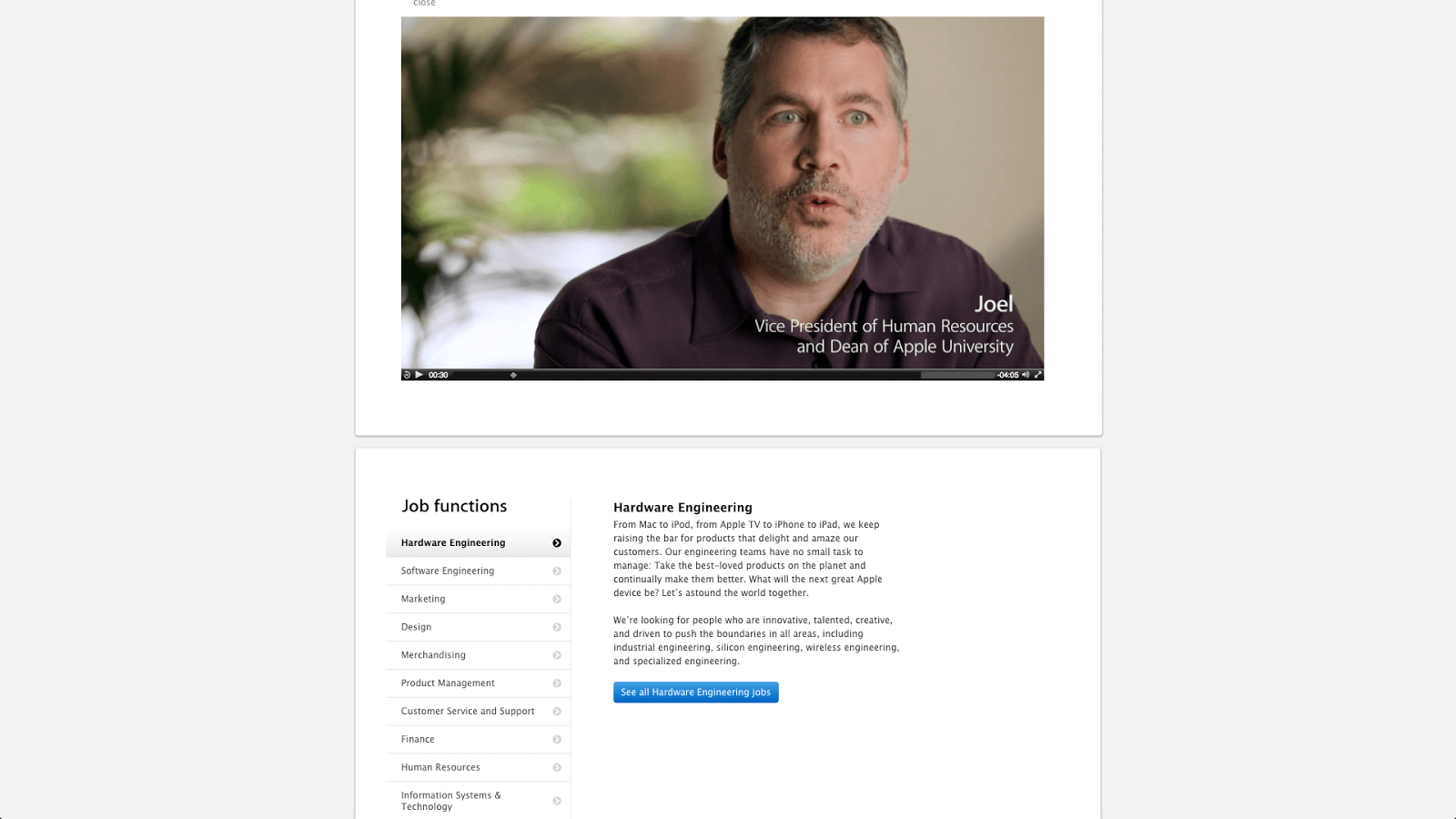
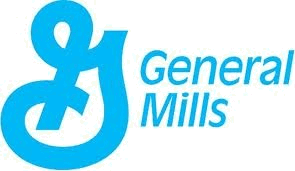
General Mills: (we love the “Fit Finder tool”)
![]()
Google: (just packed full of good stuff to impress job seekers)
![]()
Metaswitch: (we love the puzzle)
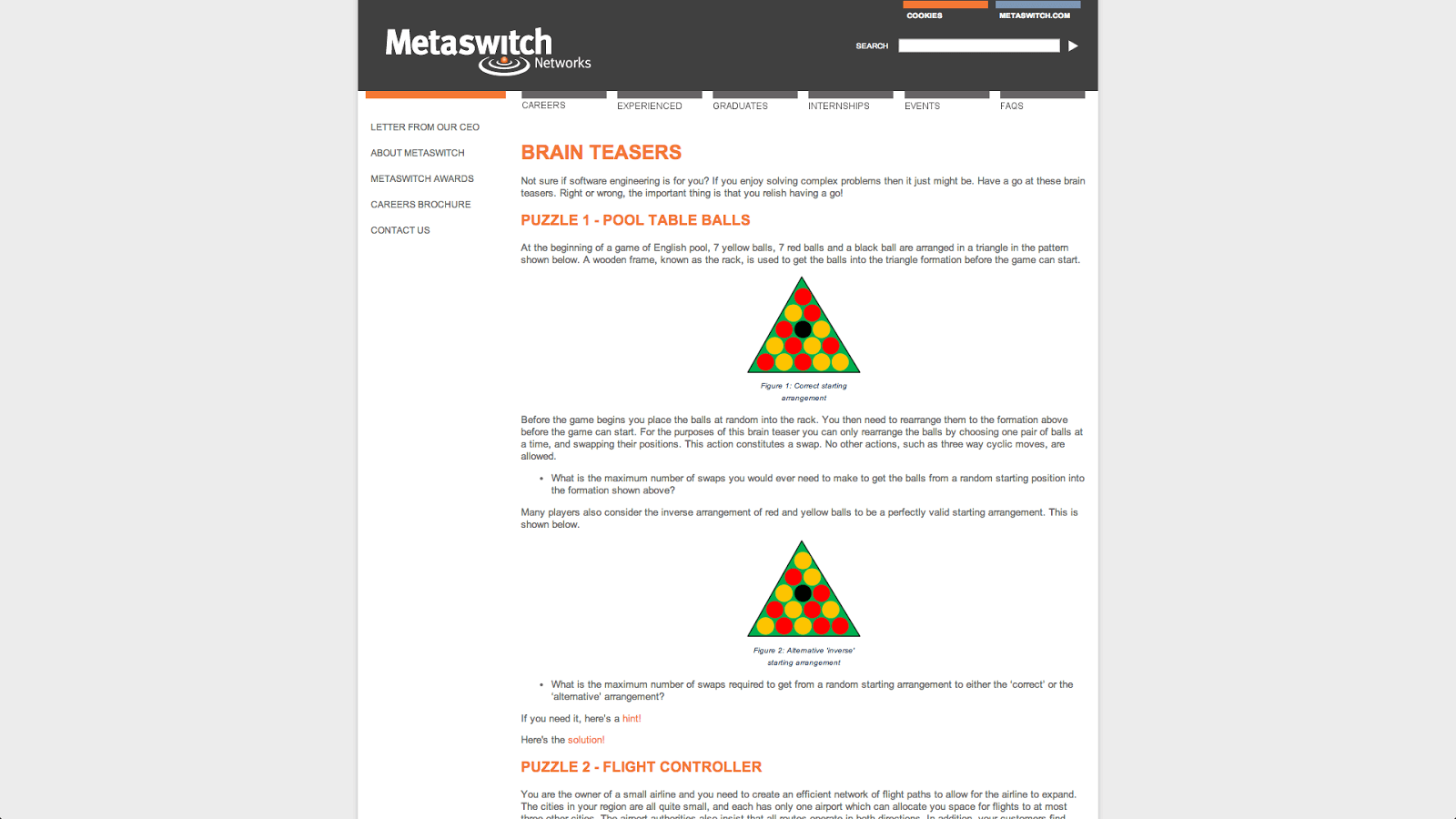
![]()
We love the detailed video profiles of their employees:
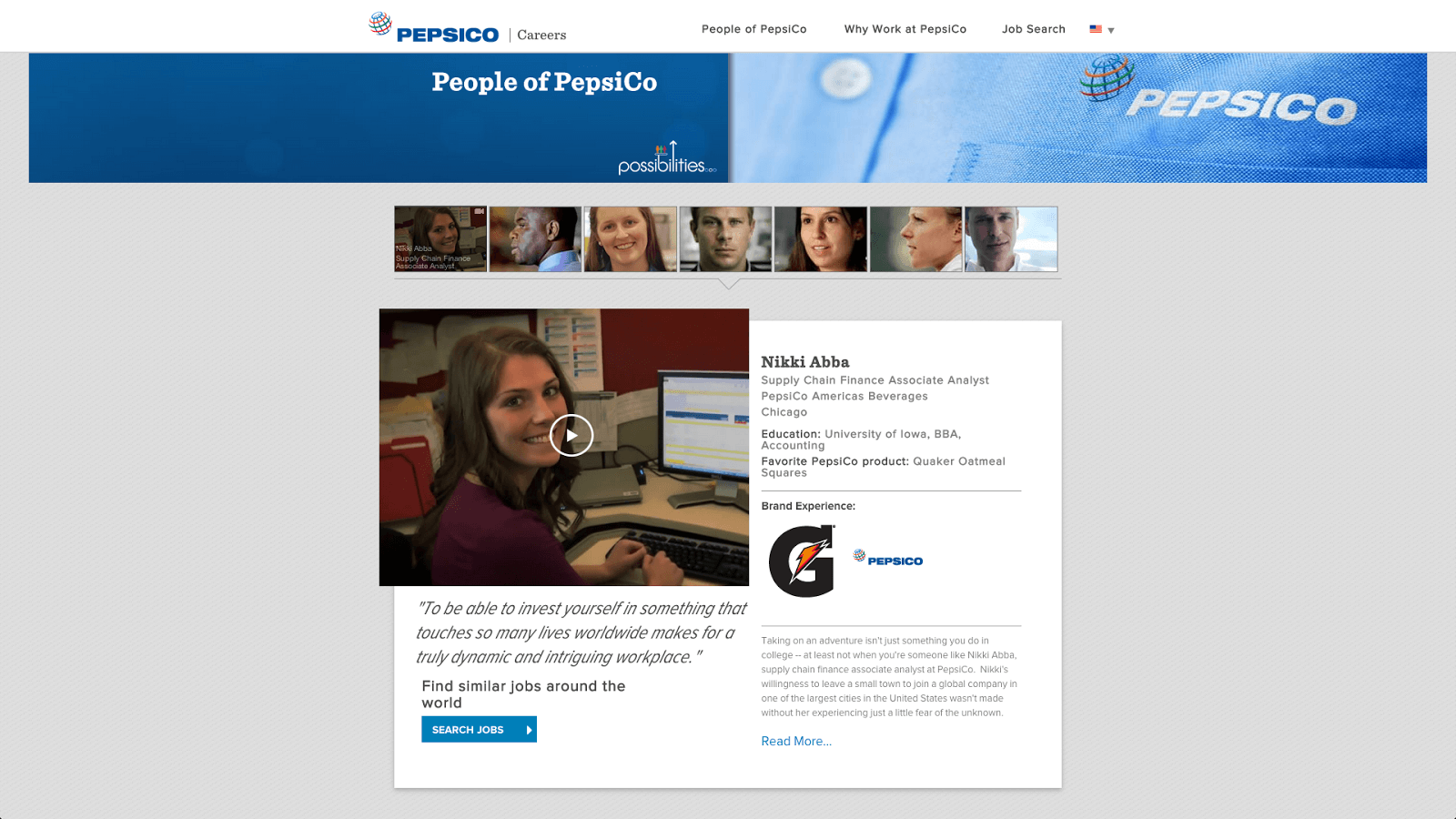

PWC:
We love the “Our people” section tracking career progression. Great idea.
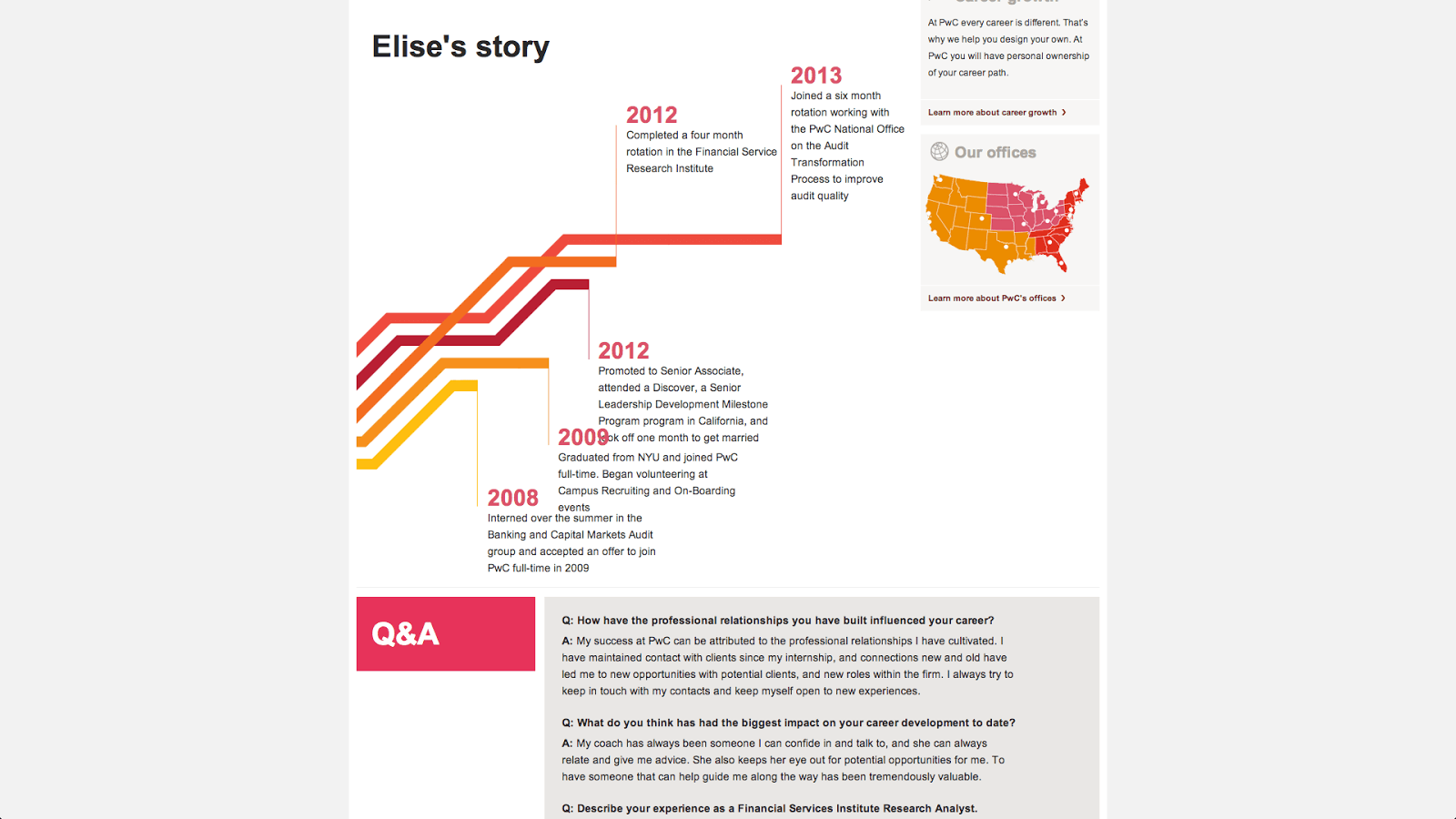

We love all the pictures. So simple to do but it just makes you think all the staff actually love working there…..which they probably do:
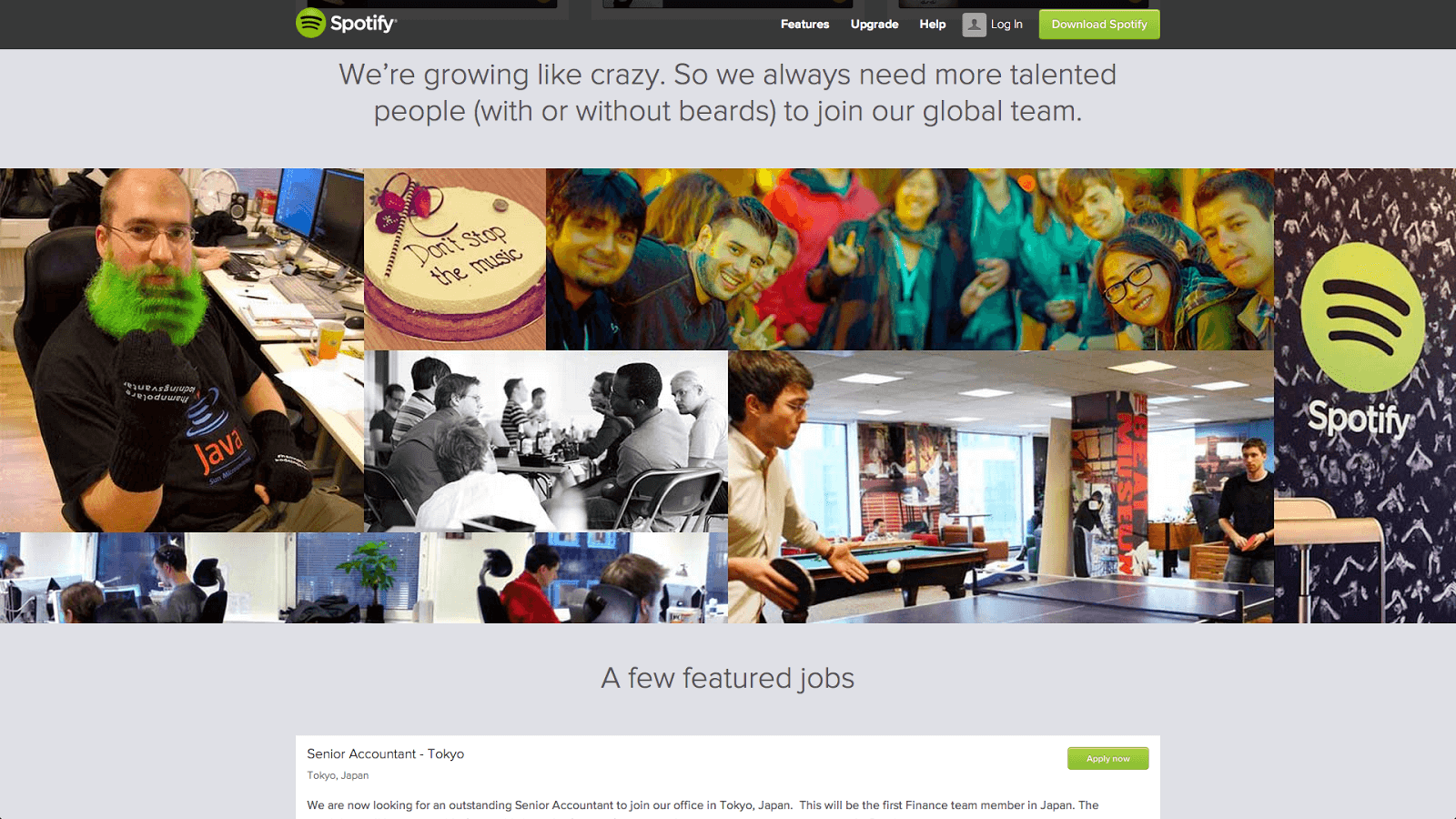

We love the really simple search tool on the careers section’s front page so you can zero in on exactly the type of job you want without having to suffer death by clicks to find them:
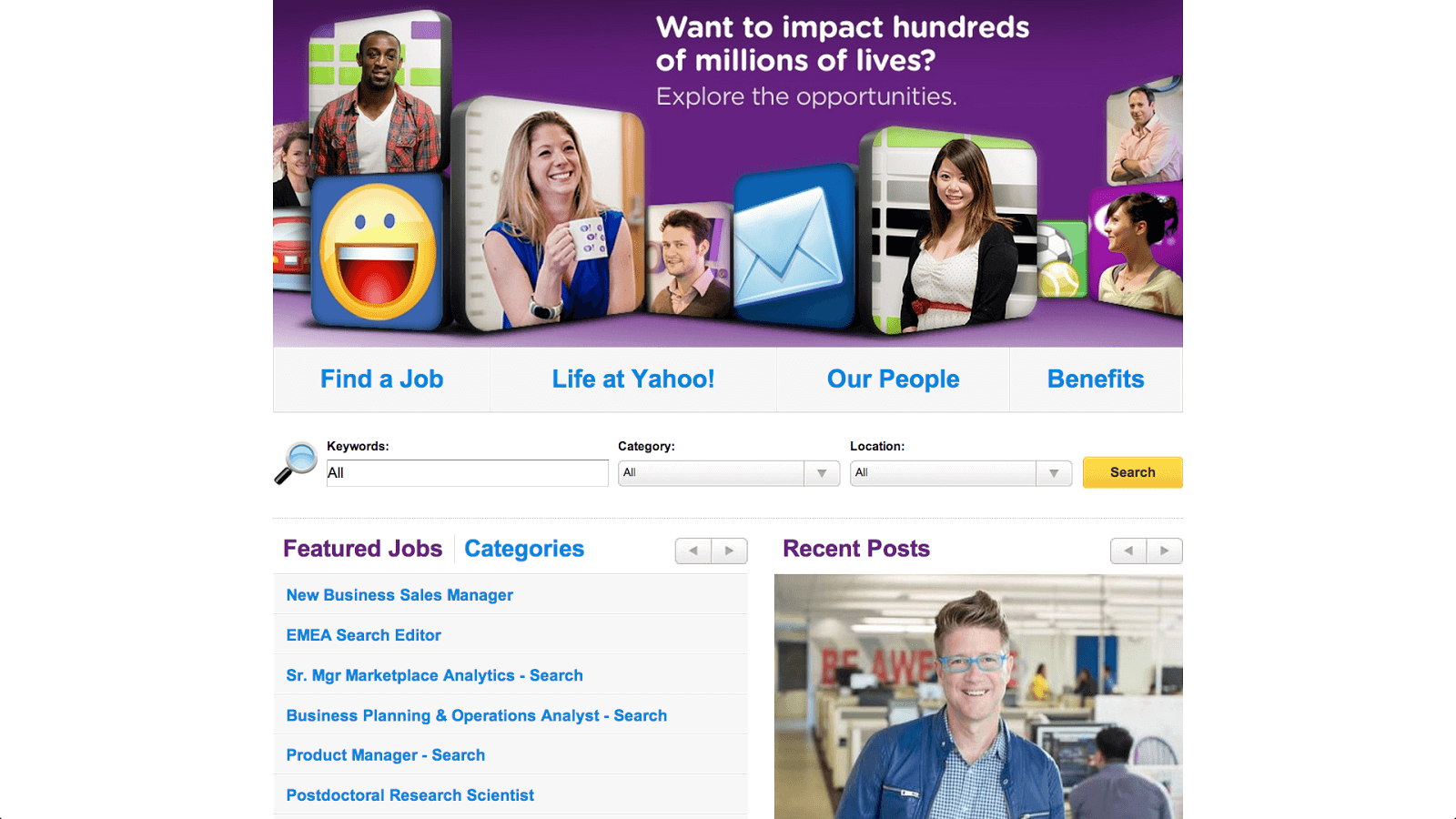
![]()
A site which fuses ease of use, information, and attractiveness as well as any we’ve seen is Hymans: Proof that you don’t have to be a global brand to be an attractive one. Almost everything it should be doing, it is doing.
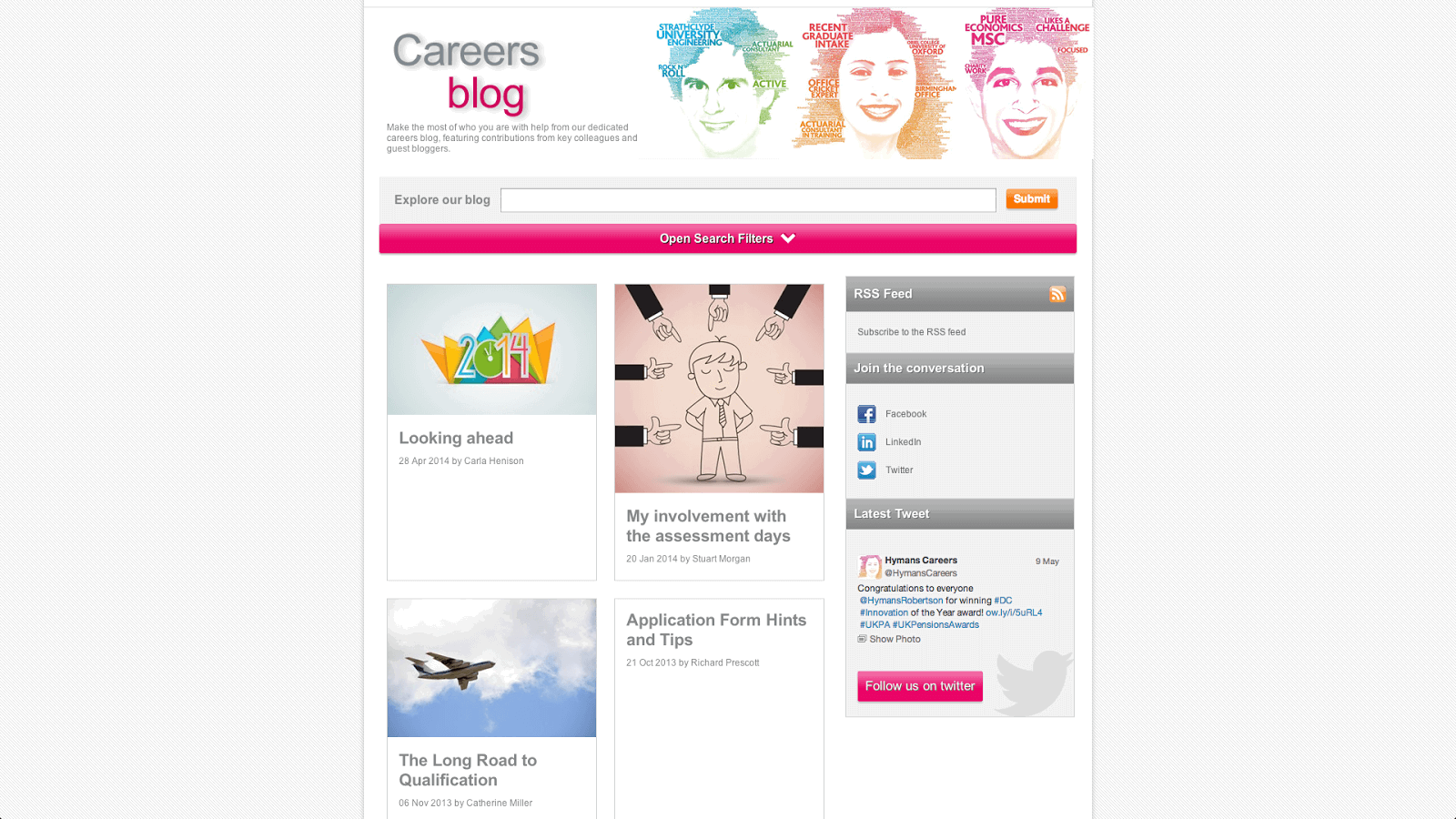
Here’s why we like it:
We love the fact that the careers link is clearly visible on the front page of the corporate site.
We love the fact that the design for the careers site is a little different to the main site. This makes it look like they’ve made a real effort to impress job seekers.
We love the FAQs section. Simple but packed with relevant information.
We love the video testimonials from staff. Nothing is more powerful that seeing your potential colleagues raving about why it’s a great place to work.
We love the interactive blog where potential new recruits can comment and ask questions.
We love that the company Twitter page is on the careers site.
We love the fact that the careers site is littered with keywords relevant to their business
But above all we love the uncluttered look and navigation, making it easy to find and return to the content relevant for you.
Some other ideas they and others might like to consider? Make it easy for people to share the jobs on their social networks.
These days it’s not good enough just to list your jobs. Yes there are plenty of people competing for your jobs but there are still the same number of really top candidates out there as there were five years ago and if you want those top 5% applying to you then you have to go beyond a mere list of jobs. Ask yourself what you’d like to see if you were applying for a job and now compare that with your current careers site. Does it stack up?
Chapter 4:
Mobile recruiting: ignore the waffle and just do this
Before you leap to hire those mega-expensive web developers to work oh so hard on a mobile-optimized website on your behalf, stop and read this and save yourself a lot of money. There are just four simple things you need to do.
Because of the business we’re in, we are constantly looking at company careers sites to see what ingenious ideas have appeared. One of those has been to optimize careers websites so they can be used on a mobile phone. There’s no doubt that a lot of searches for jobs are now done on mobiles. Sitting on the train or bus going to work, or waiting to pick up the kids in the school parking lot, it’s just so tempting to look around and see if that dream job has appeared at you major competitor yet.
So the message to corporate recruiters is a resounding “Yes.” Yes, you need to make your site work on a mobile, but radical changes are not required. In fact, whatever you do, don’t listen to those expensively hired consultants who tell you that you need to radically alter the look, feel, design, etc. of your site. You don’t!
Nor do you need an app in the iTunes store. An app is good for someone who is going to use it constantly, like maps. How many times a year will someone apply to you? It’s just an unnecessary expense. Save your money.
We’ve looked at over 30 major company sites, including some really big names, on both a computer and a mobile device (screen size varied from 4 – 5.3 inches). Many of them had very attractive and generally excellent careers sites packed with information to attract potential candidates, but were a total disaster if you’re using a mobile. Take the example of one well-known retailer we looked at. Its careers site looks exactly the same on a laptop as it does on a small mobile device, and that’s how it should be. The details, look and feel are identical. So far so good. The reality is in the next 12 months almost everyone will be using a device with a screen size in excess of four inches. Typically the smartphone sweetspot will be 4.5 – 5.5 inches (all phones are getting bigger, not smaller) and with easy pinch and zoom functionality that’s easily enough screen real estate to browse around even the most packed careers site and view pretty much everything.
So: You do not need to alter the design of your career site. Don’t let them lure you into thinking you need to spend a fortune redesigning everything.
Anyway, back to the retailer’s careers site. It also allows me to apply with my Linkedin profile, extracting bits of information. That’s good, but this is where is starts to go wrong. Remember, we were testing on a mobile phone. When I saw the LinkedIn symbol I thought, “Ah, this is good. They will simply look at my profile on Linkedin and the application process will be a matter of seconds.”
How I wish it was that simple. Drop down after drop down, boxes to fill in ,and this, that, and the other, not forgetting the box to upload my resume … which I don’t keep on my phone. If you don’t have your resume on your phone (does anyone?), then applying is near impossible. Why so many boxes to fill in, check, and generally muck around with? Can’t you see I’m on a 4.3-inch mobile? It’s too fiddly. Stop making me do things that are physically awkward, if not impossible. Make life easy for me. I’m the applicant, so make it easy for me to want to join you and stop putting barriers in my way.
We also looked at a well-known online retailer. Will they do a better job? Marginally, in the sense that you can extract your CV from online sources like Google Drive and Dropbox, but again, way too many boxes to fill in and stuff to do. If I can’t apply in under 30 seconds, it’s too complicated.
And so it went on, big company after big company making me complete detailed application forms and asking me to upload a resume that I don’t have stored on my phone. In short, applying for a job with these companies was a non starter on a mobile. Now all of these companies are using an ATS, so the blame should at least partly be allocated to the ATS. But come on corporates: demand they put in place a mobile friendly application process.
Here’s how.
Don’t worry about adjusting the design or layout. All modern smartphones above four inches can handle it.
Get rid of lengthy application forms. It’s just impossible to complete them on a mobile. A few simple drop-down questions or yes/no is fine (that should cover EEO questions) but no big text boxes. If you need them to complete more, get an automated email after their initial quick application to include a link so they can return later to fill in the remaining details on a laptop.
Don’t ask someone to upload a resume. Most won’t have it on a mobile. Instead, add in links to Google Drive, Onedrive, SugarSync, and Dropbox so they access a resume from where it’s stored online.
Add in quick apply buttons from Indeed, Monster, and Linkedin allowing the user to apply with an online profile already created
Chapter 5.
10 easy ways to attract better candidates with a killer job advert.
The job market is ‘hotting’ up. Okay, so it hasn’t quite reached the molten levels of seven years ago, but make no mistake, we’re through the worst of it. And as an employer, you’re increasingly going to have to impress a candidate to get him/her to apply. You want great people; write a great job ad. Here’s how:
1. Any job advert must have 3 sections
About your company
About the role
About the person you want to hire
That’s the bare minimum.
Too often job adverts do nothing to sell the company and that’s a major mistake; so don’t forget to include a paragraph on what you are as a business. Speaking of which………
2. Wow the candidate with a killer fact immediately
Okay, we realize that not all jobs are amazing, not all companies are terribly exciting or the industry the company operates in might be a bit dull, BUT there are a few things you can do to make the job more appealing. There is always some interesting and appealing statistic that the company possesses. When describing the company, make sure you add in a measurable and impressive statistic. A sort of killer stat that will impress. Don’t just say, “We’re a young and fast growing company;” make it measurable:
We’ve grown from 5 people to 46 in just 3 years
or
Due to our rapid success, we are expanding our headcount by 50% over the next 2 years
or
We are the market leader in xxxxxx with over 45% of the market
Anything really. Just put an impressive and accurate statistic written right at the top of the job description to grab their attention. Have a look at any direct employer advert on any job board and ask yourself the question: Does that sound like a great opportunity? If it does, try and copy what that company has done.
3. If the job is a new role……………TELL THEM:
Have you ever recruited an entirely new role and never mentioned that in the job description? If you are, you’re missing out on a golden opportunity to make the business look dynamic and look like it’s really growing.
If the job is a new job……………TELL THEM:
Due to our continued growth, we are recruiting a new position of xxxxxx” or words to that effect.
4. Tell them to go to your website
Make it clear on job adverts you’re posting externally that it would be very beneficial to go to your website (providing you’ve actually got a half decent careers section).
Tell them what they can expect to see on your careers portal, i.e. lots more jobs, staff profiles, company video, etc. On the job advert, list anything you have on your careers portal that you think will appeal to them and tell them to go and have a look. They’re more likely to apply once they’re on your site.
5. Add some comments from your staff on the job details
Ever done that? Thought not. Add a new paragraph with the heading: Comments from some recent hires. Then just add a sentence or two from them eulogising (well hopefully eulogising) about the company and how much they’ve enjoyed it, etc.
6. Lots of relevant keywords…….the first 100 words are critical
When job seekers do a search for a job, let’s say “Web Developer” in Miami, the job board will rank all relevant jobs by the number of times the phrase “Web Developer” is listed for any jobs in Miami. That’s a bit of a generalization, because they also place weight on whether the title matches the keyword search and how high up the phrase is in the job description, but as a general rule, the more times you mention those keywords, the better.
So if you’re going to advertise on a job board, make sure you use lots of relevant keywords as high up the job text as possible, i.e. the sort of words that candidates will be searching for. So in the above case, make sure you mention “Web Developer” as many times as you can feasibly do in the first 100 words. All the recruitment agencies swamp their made up job adverts with lots of keywords, so if you want to get above their jobs in the listings you’d better do the same.
IF THE JOB IS NOT ON PAGE 1 OF ANY SEARCH DONE ON A JOB BOARD, IT MIGHT AS WELL NOT BE THERE.
7. Lots of relevant alternative keywords
Occasionally you will advertise a role where the key words or phrases may have alternatives that are regularly used in the industry. For example, if you’re advertising for a Public Relations Manager, a lot of job seekers will simply put PR into the job board’s search box, and if you haven’t mentioned the identical keyword (in this case PR), your job is unlikely to appear.
So, if you’ve got any words/phrases that have alternatives commonly used, make sure you list them in the job description (ideally at the top). Another obvious example would be a Sales Manager vs. Business Development Manager. You might call the job “Business
Development Manager,” but if a job seeker searches for “Sales Manager” your job won’t appear. So make sure you cover all the bases and mention all possible alternatives as much as possible in those first 100 words. There’s nothing wrong with doing this at the start of the advert text on the job board to make absolutely sure: Sales Manager / Business Development Manager sought by xxxxxx
8. Use a relevant industry job title
Whatever you do, don’t be tempted to come up with some wacky title that no one in the industry is familiar with. If you’re hiring a Finance Manager call it a Finance Manager. Don’t call it Vice President of Cash Flow Enhancement. Remember that job seekers will search using fairly generic terms—HR Manager, Brand Manager, Web Developer—so if your job title is very different it may not appear in the search or your own careers portal if you have lots of jobs.
9. Every so often try, the world’s best job ad. Here it is:
ABC inc is growing.
No I mean really growing. The sort of growth you’d be bonkas not to want to be a part of.
We hire great people for great jobs and we can’t do our new xxxxx vacancy justice on one page so please visit www.abcinc.com/careers to find out about our story so far and discover where we’re going.
Now you’ve got their attention; which candidate would be able to resist the temptation of visiting your careers page?
10. Add an email so they can contact you
Job seekers are going to have questions. Sometimes about the job, sometimes about the company. If you don’t add in something like this:
If you have any questions about the role or our company please email hr@xxxx.com.
You may lose out on great candidates. Yes you might get the odd timewaster but it’s worth it to capture that superstar candidate who is curious and without an answer to their question, they would never apply.
Chapter 6.
How to source brilliant candidates through employee referrals
Everyone knows that the best hires come from referrals and whilst most companies have some kind of referral scheme in place they rarely yield the results they should because of a lack of the right software to run it plus the scheme itself and how it’s launched and maintained is not very good.
Any decent ATS should have an employee referral module in place for you to use:
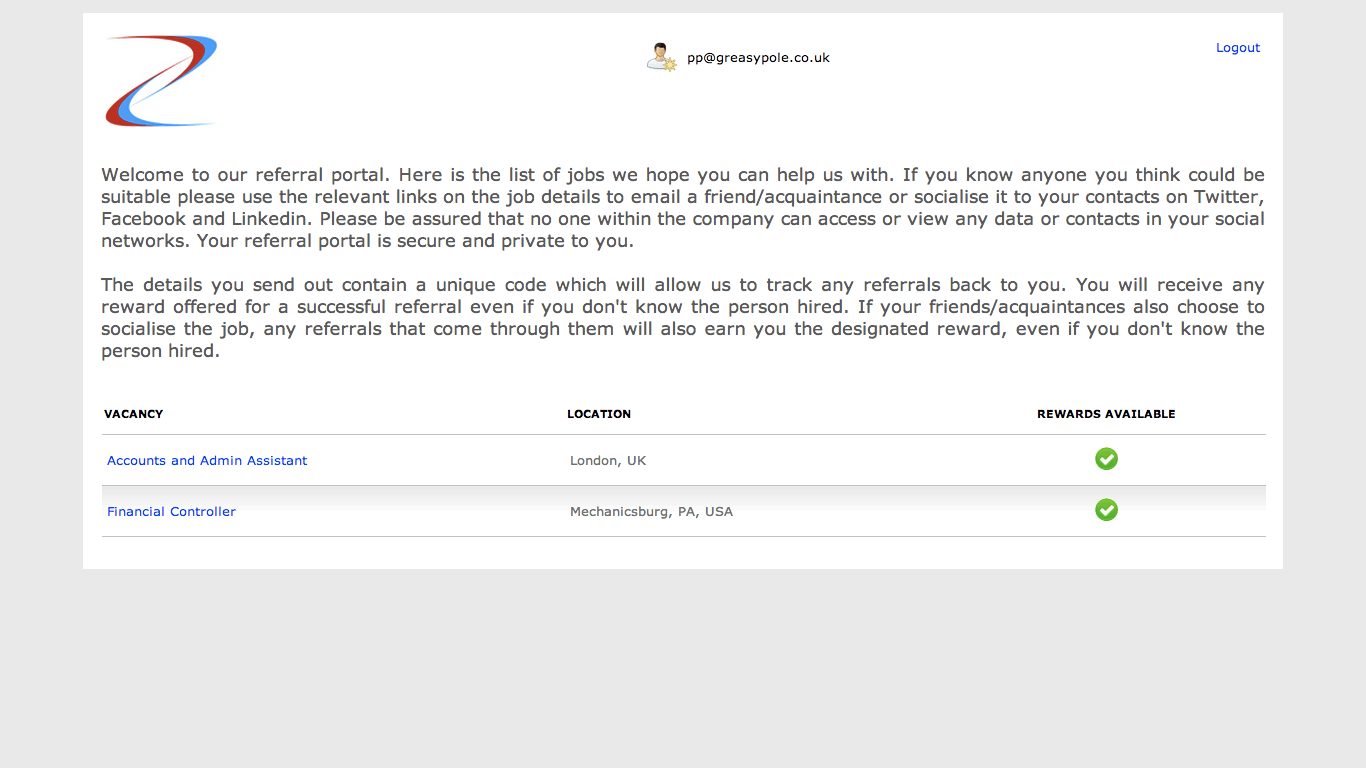
so we’ll concentrate here on the how to design, launch and maintain a great employee referral scheme.
Make a big splash about it
Don't just send out a solitary email, do something dramatic. Announce the launch and then say that the very first person to provide a successful referral hire made through your new referral tool will win $10,000 or an extra week of holiday.
It's up to you how generous you want to be but make sure it's a ‘blimey moment’. So when your staff see the reward offered they go………”Blimey, that's good”. Grab their attention with a one off seriously tasty reward for the very first hire.
It has to come from the top
If you can, make sure it's the head honcho that launches it…..the big cheese. If your staff know that it's the CEO pushing it, the programme will carry greater importance in their minds. That introductory email and/or message on your intranet should come from the top.
Publicise the successes
When you make a successful referral hire, publicise it. You can send out a bi-monthly email or entry on your Facebook page or intranet announcing who gave the referral and what reward they go. A nice picture holding their new iPad in the staff magazine is a good starting point. The more success stories people hear about, the more they will want to get involved to win those nice rewards.
Speaking of rewards…
Don't be shy, get the cheque book out and really incentivise your staff. If you're offering a half day or $10 gift voucher then you're not likely to get many staff members working hard on your behalf to try and find you someone suitable. It's like a lottery: if you offer enough as the top prize people will join in.
iPads, tablets, 3 days of holiday, $500 in cash, a flight to London etc, etc... the more you offer, the more you'll get.
You might also like to consider a multi reward scheme so if someone successfully refers say 3 people in a 2 year period offer them a serious reward on top of the individual rewards for each hire.
It's a bit like earning loyalty points. Once they've earned enough they can cash them in so on the 3rd successful referral give them an extra weeks holiday on top of the standard referral prize for that 3rd hire……..and publicise it !!! Remember the ‘blimey’ moment. So not only could a successful referrer win an ipad, $500 and a flight to London for 3 successful referrals the 3rd one also qualifies them for a weeks holiday.
Don't forget, all of this would still cost you less than the fee of 1 placement from a staffing agency.
Don't be afraid to up the reward
If you have sent a job to only a select few staff members asking for referrals and nothing has happened open it up to everyone and increase the reward.
If you've sent a job to everyone and you still can't fill it, send out a reminder email or post onto your intranet and up the reward.
Remember a $2,000 bounty is a lot less than you'd pay a staffing agency so it's definitely worth being generous to save yourself a much bigger fee.
Consider adding external referrers
There's nothing to stop you adding in external suppliers, ex members of staff or just about anyone who would be interested in joining your scheme. All you have to do is add their name and they’ll receive your email alerts alongside regular members of staff.
Why limit your pool of available referrers to only those currently working for you?
Be selective about which jobs you ask for help with
If every job you ever recruit is sent out to staff members then it will begin to lose it's impact. We recommend you focus the employee referral programme on hard to fill jobs or those with management responsibility and above.
If your staff get an email every week asking for referrals they will begin to switch off. Once a month is fine with new jobs and tasty rewards.
Generally speaking the more traditional routes to candidates like job boards should work pretty well for lower level vacancies so you may not need to use a referral programme for those type of positions.
Keep the referrer informed
If you can, whoever the applicant was referred by, keep them informed of how their referral is doing. Just drop them an email……”Great referral. We've invited her in for a 1st interview next week”. Equally if they weren't successful, tell the referrer why not because the referrer might know someone else who could be more suitable.
The more they feel part of the process, the more they will help you again in the future.
Offer rewards for ‘close but not quite’
You could offer say $500 for a successful hire but if someone gets a 1st interview you could offer $100 or if they get to 2nd interview, $200. It's entirely up to you how you structure it but there's nothing stopping you offering different rewards depending on how far the applicant gets in the hiring process.
The gift that keeps on giving
Some football teams (that would be soccer to our American cousins) do this. So when a player is sold to another team the transfer fee contains financial incentives to the selling team if that player does really well... such as scoring lots of goals. Why not do the same thing for you referral programme so you could say you'll earn $250 for every year the applicant stays with your company. So if someone successfully refers 4 people they'll be earning $1,000 every year on top of their salary.
Vary the reward depending on seniority
Let's suppose you're hiring someone on a £100k base salary. Why not offer a really generous referral reward for those hard to fill or senior roles. If you offer £500 as a referral reward to hire a £25k administrator it makes sense to offer proportionately more for someone earning £100k so don’t be afraid to offer a big incentive to encourage your staff and anyone else on you've added into your referral scheme to come up trumps and work hard to find you some great people.
Use an agency and you'll spend £25k plus so even if you offer £3k that's a big saving and you'll probably get a better candidate.
Make the rules clear
When you send your first job out to people requesting referrals, make sure you fill in the section: Rules and rewards.
In there, define exactly what the rewards are, the payment terms and any other special incentives you are offering. You don't want to get into an argument about how much should be paid as a referral or indeed whether a referral should be paid at all. Water tight definitions and rules are essential.
Treat the candidates like royalty
Even if you don't think they are suitable either at the cv review stage or after interview, if you can, please phone them to let them know you're not progressing them.
There are 3 reasons:
It will impress them and make them want to work for you in the future for a different role.
It will impress whoever sourced them i.e. the referrer and if people they know have been treated well they are more likely to help again in the future.
Applicants you've impressed, even unsuccessful ones, are more likely to say yes if you want to add them to your referral scheme. They will almost certainly know suitable people.
Create a league table
Try creating a points table and keep it regularly updated making sure you post it on a referrals page on your intranet so all your employees can look at it. It doesn't have to be anything too fancy, just the names of everyone who has earned points referring people in descending order so everyone can clearly see who's winning.
As soon as people can see how many points they've earned so far and that's there’s a big bonus for the winner at the end of each year…….you'll be amazed how competitive it can make people. Just don't forget to offer a big incentive for the first person to get to 20 points or however you want to structure it.
Keep that league table updated weekly.
Keep reminding everyone… every month
Typically when you launch a referral programme there's lots of initial enthusiasm (provided you follow the points above) but activity levels will wane a little as times go by.
Keep reminding people with emails about jobs you need help filling. So every quarter organise a prize draw in front of the whole company (or by location for multi site companies). Put the name of everyone who has contributed to the referral programme in a hat (even if they haven't generated an applicant who has managed to get to an interview). Gather the whole company to view it and get the CEO/Head of that site to draw a name out of the hat and that person gets a prize… new TV, day off… whatever you want but make it worthwhile otherwise gathering the whole company together to see someone winning a basket of fruit doesn't quite have the wow factor but a weeks holiday to Paris… that's actually worth watching. The whole idea is that every month you're reaffirming the importance of the referral programme, reminding people it's there and also that they can win nice stuff just for taking part.
Make it part of a hiring manager's appraisal
If you've got a manager responsible for a few hires a year it's perfectly reasonable to make referrals a part of that appraisal.
All hiring managers with management responsibility (i.e. they run a team) should be targeted with a certain number of successful hires each year through referrals. If they know it's part of the appraisal process you can bet your bottom dollar they'll be nagging away at their team members to produce the goods.
Consider a choice of rewards
Cash isn't always the best way to motivate people to provide incentives. Tax implications always get in the way so think about a range of gifts instead.
“£100 gift token for a 1st interview, 1 days holiday for a 2nd interview then take your pick from any 5 possible gifts for a successful hire: ipad, new laptop, 32 inch TV, 3 days off.”
Put a link on your intranet somewhere
Make it easy for employees to be able to access their referral portal by putting a link to it on your intranet.
Ideally you'll create a league table for keep to see how they are doing (point 14) but why not put a link at the top of that.
Here's an example programme referral programme:
The first person to make a successful referral earns £5,000
[This is designed to grab everyone's attention during the launch phase of your new referral programme]
Thereafter…
Recruitment stage
1st interview but no further: | £100 | plus 1 point |
2nd interview but no further: | £200 | plus 2 points |
Hire and completion of probationary period | £500 salaries £29,999k and below £1,000 for salary between £30k and £50k £2,000 for salary above £50k Plus 5 points for a successful hire |
If you refer someone to us and they get a 1st interview but don't progress further we'll give you £100.
If they complete a 2nd interview but we don't take them further in the recruitment process you get £200.
If we hire them you'll get £500. We'll give you £200 as soon as the offer is accepted and the remaining £300 once the candidate has successfully completed their probationary period.
Regardless of what stage the referral gets to, pay the £100 or £200 immediately so the person who made the referral gets an immediate win.
Accumulator
The person at the end of the year with the most referral points will receive an additional bonus of £10,000.
Whenever anyone reaches 10 referral points, they will also earn a bonus of £2,000
For even more amazing tips click here for last year’s e-book.